How much crud is acceptable to be in an oil filter after running a rebuilt engine for an hour? I cut my oil filter open and did find some very fine metal particles in it. But I am hoping this is ok since this is freshly rebuilt engine. The magnets also have some metal dust on them.
You are using an out of date browser. It may not display this or other websites correctly.
You should upgrade or use an alternative browser.
You should upgrade or use an alternative browser.
Inspecting filter
- Thread starter Dustytrix
- Start date
Re: Inspecting oil filter
its NORMAL and EXPECTED to see some fine metallic dust in any oil filter during the initial break-in or lapping in process, as the rings and lifters lap in and seat,
the amount should be very limited or trace amounts , if youve got much more than a finger tip worth theres usually a problem, if you can fill a 1/4 teaspoon Id suspect theres a significant problem that needs to be located and corrected
adding some magnets to trap loose metallic debris, from broken or worn parts helps reduce potential problems
http://www.magnet4sale.com/samarium-cobalt-discs/
related threads
viewtopic.php?f=54&t=4580
viewtopic.php?f=54&t=117
viewtopic.php?f=54&t=4558
viewtopic.php?f=54&t=1191&p=4497&hilit=magnets#p4497
viewtopic.php?f=52&t=282&p=2022&hilit=magnets#p2022
viewtopic.php?f=54&t=120&p=867&hilit=magnets#p867
How Much Crud Could An Oil Filter Catch, If An Oil Filter Could Catch Crud?
Release Date: 3/15/2010
BROADVIEW, IL, March 15, 2010 – We’ve all heard the children’s rhyme, “How much wood would a woodchuck chuck if a woodchuck would chuck wood?†But do you know how much crud could an oil filter catch?
Just exactly what kind of ‘crud’ might you expect an engine oil filter to capture? Actually, the assortment is broader than you might think. According to Ramon Nuñez, Director of Filtration for Robert Bosch LLC, joint venture owner of Purolator Filters, “There are many types of debris that can find their way into a car’s oil and, hopefully into the oil filter where it can be stored until the filter, complete with debris, gets discarded.“
Nuñez should know, since Purolator is the company that invented the very first automotive oil filter (“Pure Oil Laterâ€) in 1923, the first full-flow oil filter in 1943, and the first spin-on oil filter in 1955.
According to Nuñez, many different types of metallic and non-metallic debris can find their way into a car’s crankcase. Bits of metal casting flash can flake off of the inside of the engine block, off of internal engine parts like pistons, connecting rods and rocker arms. Other bits of metal can result from normal (and sometimes not-so-normal) engine wear. For example, bits of engine bearing or timing chain can also develop over tens of thousands of miles of wear. And, of course, some parts can actually break in use, allowing the engine to continue to run almost normally, while depositing potentially-damaging metal pieces into the oil system. For instance, a piston ring may break, allowing the engine to continue to operate almost normally while dropping significant pieces into the sump.
Further, points out Nuñez, potentially-damaging non-metallic particles can also find their way into a vehicle’s oil system. Examples include dust and dirt, disintegrating valve stem seals, pieces of timing chain gears, and bits of gasket material can all take a swim in your oil. Coal-like carbon can also bake onto lubricated internal engine parts from heat and age, and then flake off into the lubricating system, with similar potential for major engine damage.
So, there are plenty of opportunities for potentially-damaging debris to enter a vehicle’s oiling system. And there’s no realistic way to keep that from happening. So the question is, since such debris is inevitable, how best to keep it from reaching places where it can do damage?
Purolator oil filter to the rescue!
The sole purpose of an oil filter is to remove particulates from your engine oil before it can cause wear or damage. All oil filters do this to some degree. However, explained Nuñez, all oil filters are not created equally. Two attributes define a filter’s ability to filter – 'efficiency' and 'capacity.'
'Efficiency,' says Nuñez, is a measure of the percentage of debris a filter can capture. For example, Purolator Classic oil filters are 97.5 percent efficient, meaning that they can capture and hold 97.5 percent of particles larger than a thousandth of an inch (0.001â€). Purolator premium PureONE filters can capture 99.9 percent of these same size particles.
But, continues Nuñez, efficiency is only part of the story. As important, especially in higher-mileage cars, is capacity, which defines how much debris an oil filter can hold before it becomes completely clogged. Where required most quality oil filters incorporate a bypass valve, which allows unfiltered oil to reach critical internal engine parts. And while unfiltered oil is not very desirable, it is certainly preferable to having no oil at all to lubricate moving parts.
In any event, oil filter capacity is actually an important consideration, especially for higher-mileage vehicles, or those that experience extended oil change intervals. These are applications that may reach or exceed the capacity of an oil filter. For that reason, it is important to choose a filter that has a great capacity to hold debris.
Now, here’s a question: How much debris might you expect an oil filter to hold? A thimbleful? A shot glass full? More? Less?
The answer, as is so often the case, is, “it depends on your driving habits, engine condition and the quality of oil you use.†Unless you’re inclined to do a detailed engineering analysis of various brands of oils and filters, the only way to assure that you’re getting a superior protection for your engine, features is to specify a filter brand you trust, and a brand that’s not bashful about detailing the specifics of their filters’ capabilities.
For example, Purolator’s PureONE oil filters will hold up to 13 grams of debris before reaching the point where the filter’s bypass valve may open. By way of comparison, explains Nuñez, 13 grams is the equivalent of about 31 standard-size paper clips. So, in light of the above description of the kind of debris that can make its way into your engine oil, you’d have to have a tremendous amount of engine wear caused by dirt or particles of oil breakdown and find their way into your crankcase and, ultimately, into your oil filter. And, hopefully, you’ll be conscientious enough to change your oil and filter long before your filter collects that volume of debris.
But, in the meantime, concludes Nuñez, you can take great comfort in installing a filter you know can capture and hold all the particles your engine can generate between recommended oil changes. After all, the cost of a quality oil filter pales in comparison to the cost of a new or engine or (gasp!) the cost of a new car. So if you protect your car, your car will protect your checking account.
Bottom line? That’s how much crud an oil filter can catch, and an oil filter does catch crud!
its NORMAL and EXPECTED to see some fine metallic dust in any oil filter during the initial break-in or lapping in process, as the rings and lifters lap in and seat,
the amount should be very limited or trace amounts , if youve got much more than a finger tip worth theres usually a problem, if you can fill a 1/4 teaspoon Id suspect theres a significant problem that needs to be located and corrected
adding some magnets to trap loose metallic debris, from broken or worn parts helps reduce potential problems
http://www.magnet4sale.com/samarium-cobalt-discs/
related threads
viewtopic.php?f=54&t=4580
viewtopic.php?f=54&t=117
viewtopic.php?f=54&t=4558
viewtopic.php?f=54&t=1191&p=4497&hilit=magnets#p4497
viewtopic.php?f=52&t=282&p=2022&hilit=magnets#p2022
viewtopic.php?f=54&t=120&p=867&hilit=magnets#p867
How Much Crud Could An Oil Filter Catch, If An Oil Filter Could Catch Crud?
Release Date: 3/15/2010
BROADVIEW, IL, March 15, 2010 – We’ve all heard the children’s rhyme, “How much wood would a woodchuck chuck if a woodchuck would chuck wood?†But do you know how much crud could an oil filter catch?
Just exactly what kind of ‘crud’ might you expect an engine oil filter to capture? Actually, the assortment is broader than you might think. According to Ramon Nuñez, Director of Filtration for Robert Bosch LLC, joint venture owner of Purolator Filters, “There are many types of debris that can find their way into a car’s oil and, hopefully into the oil filter where it can be stored until the filter, complete with debris, gets discarded.“
Nuñez should know, since Purolator is the company that invented the very first automotive oil filter (“Pure Oil Laterâ€) in 1923, the first full-flow oil filter in 1943, and the first spin-on oil filter in 1955.
According to Nuñez, many different types of metallic and non-metallic debris can find their way into a car’s crankcase. Bits of metal casting flash can flake off of the inside of the engine block, off of internal engine parts like pistons, connecting rods and rocker arms. Other bits of metal can result from normal (and sometimes not-so-normal) engine wear. For example, bits of engine bearing or timing chain can also develop over tens of thousands of miles of wear. And, of course, some parts can actually break in use, allowing the engine to continue to run almost normally, while depositing potentially-damaging metal pieces into the oil system. For instance, a piston ring may break, allowing the engine to continue to operate almost normally while dropping significant pieces into the sump.
Further, points out Nuñez, potentially-damaging non-metallic particles can also find their way into a vehicle’s oil system. Examples include dust and dirt, disintegrating valve stem seals, pieces of timing chain gears, and bits of gasket material can all take a swim in your oil. Coal-like carbon can also bake onto lubricated internal engine parts from heat and age, and then flake off into the lubricating system, with similar potential for major engine damage.
So, there are plenty of opportunities for potentially-damaging debris to enter a vehicle’s oiling system. And there’s no realistic way to keep that from happening. So the question is, since such debris is inevitable, how best to keep it from reaching places where it can do damage?
Purolator oil filter to the rescue!
The sole purpose of an oil filter is to remove particulates from your engine oil before it can cause wear or damage. All oil filters do this to some degree. However, explained Nuñez, all oil filters are not created equally. Two attributes define a filter’s ability to filter – 'efficiency' and 'capacity.'
'Efficiency,' says Nuñez, is a measure of the percentage of debris a filter can capture. For example, Purolator Classic oil filters are 97.5 percent efficient, meaning that they can capture and hold 97.5 percent of particles larger than a thousandth of an inch (0.001â€). Purolator premium PureONE filters can capture 99.9 percent of these same size particles.
But, continues Nuñez, efficiency is only part of the story. As important, especially in higher-mileage cars, is capacity, which defines how much debris an oil filter can hold before it becomes completely clogged. Where required most quality oil filters incorporate a bypass valve, which allows unfiltered oil to reach critical internal engine parts. And while unfiltered oil is not very desirable, it is certainly preferable to having no oil at all to lubricate moving parts.
In any event, oil filter capacity is actually an important consideration, especially for higher-mileage vehicles, or those that experience extended oil change intervals. These are applications that may reach or exceed the capacity of an oil filter. For that reason, it is important to choose a filter that has a great capacity to hold debris.
Now, here’s a question: How much debris might you expect an oil filter to hold? A thimbleful? A shot glass full? More? Less?
The answer, as is so often the case, is, “it depends on your driving habits, engine condition and the quality of oil you use.†Unless you’re inclined to do a detailed engineering analysis of various brands of oils and filters, the only way to assure that you’re getting a superior protection for your engine, features is to specify a filter brand you trust, and a brand that’s not bashful about detailing the specifics of their filters’ capabilities.
For example, Purolator’s PureONE oil filters will hold up to 13 grams of debris before reaching the point where the filter’s bypass valve may open. By way of comparison, explains Nuñez, 13 grams is the equivalent of about 31 standard-size paper clips. So, in light of the above description of the kind of debris that can make its way into your engine oil, you’d have to have a tremendous amount of engine wear caused by dirt or particles of oil breakdown and find their way into your crankcase and, ultimately, into your oil filter. And, hopefully, you’ll be conscientious enough to change your oil and filter long before your filter collects that volume of debris.
But, in the meantime, concludes Nuñez, you can take great comfort in installing a filter you know can capture and hold all the particles your engine can generate between recommended oil changes. After all, the cost of a quality oil filter pales in comparison to the cost of a new or engine or (gasp!) the cost of a new car. So if you protect your car, your car will protect your checking account.
Bottom line? That’s how much crud an oil filter can catch, and an oil filter does catch crud!
Last edited by a moderator:
Re: Inspecting flter
Regular oil changes can drastically reduce the amount of sludge buildup in the oil.
Basic filter cutting & inspection procedures

you would be amazed at the sludge build up in some engines
· Visually check the filter and or filter canister for cracks and leaks.
· Inspect the filter`s bypass valve to ensure it is operating correctly.
· Drain the filter of its contents (dispose of this liquid in the correct manner in accordance with local environmental guidelines).
· Firmly hold the filter in an upright position (head on top) taking care not to crush or damage the housing.
· Using a specially designed filter cutting tool (for example, Komatsu part number 3310587S )
heres a helpful diagnostic tool,
obviously buying an oil filter can opener tool, and doing some close personal inspection of what your dealing with won,t hurt.
http://www.summitracing.com/parts/sum-900510/overview/
http://www.homedepot.com/s/paint+filter?NCNI-5
almost any auto paint store and most hardware stores sell these disposable throw away paint strainer filters , that cost about 20-35 cents each, or a bit less in bulk packs, honestly I don,t see why most guys don,t invest the dollar it takes for a magnet and a couple filters


btw most paint stores and places like lowes and home depot sell these paint filters dirt cheap,
Id suggest you buy a couple and use them, to filter draining oil as the oil drains out ,
as they are rather useful for rapidly indicating potential engine wear issues
btw hot oil will cause them to fold so you use them dropped into a large funnel as a support structure
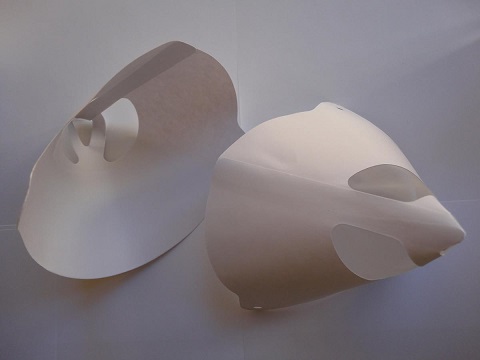
you'll want a decent size metal funnel as plastic can get flimsy if subjected to hot oil flow
and you'll want insulating gloves if you're holding a metal funnel full of hot oil, and of course,
a decent container to drain that hot oil into
shop carefully, identical funnels can be found for sale,
that cost $18-over $90 on ebay and amazon
https://www.tractorsupply.com/tsc/product/delphos-funnel-6-qt-3958503
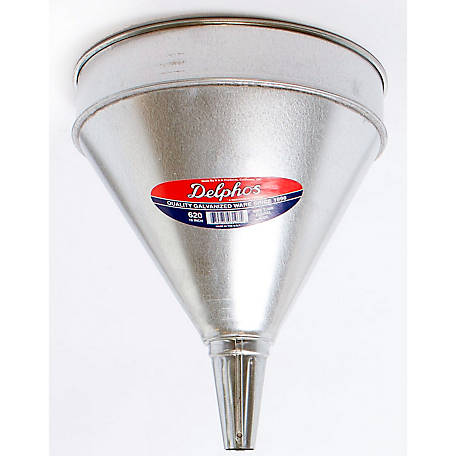
https://www.acehardware.com/departments/lawn-and-garden/outdoor-power-equipment/funnels/7060460
https://www.acehardware.com/departments/lawn-and-garden/outdoor-power-equipment/funnels/7060478
heres a helpful diagnostic tool,(the oil filter cutter pictured below) and yes I still cut open the oil filters and inspect the filter element on my cars oil filter [/color]
heres a helpful diagnostic tool,(the oil filter cutter pictured below) and yes I still cut open the oil filters and inspect the filter element on my cars oil filter
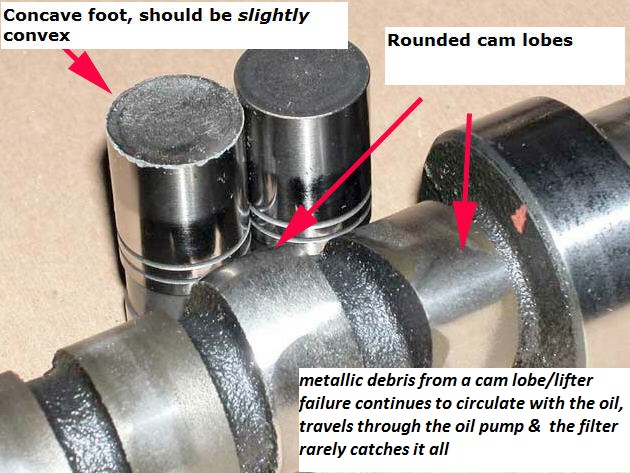
proper magnets trap metallic debris
SmCo Samarium Cobalt Disc Magnets
http://www.magnet4less.com/

Samarium Cobalt MAGNETS HELP
http://www.magnet4sale.com/smco-disk-magnet-dia-1x1-4-samarium-cobalt-magnets-608-f-temperature/
magnets are ceramic and glass hard, don,t try to drill or grind them, as they can shatter
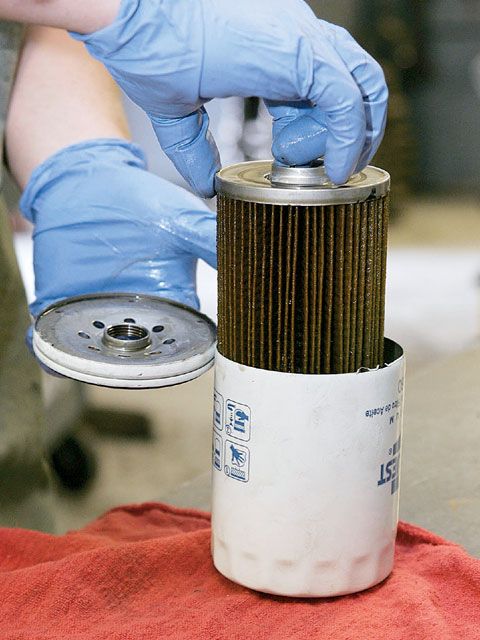
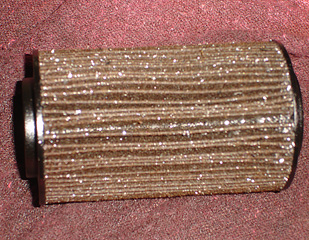
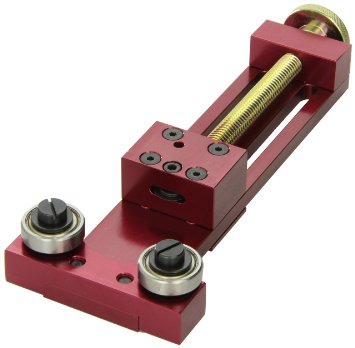
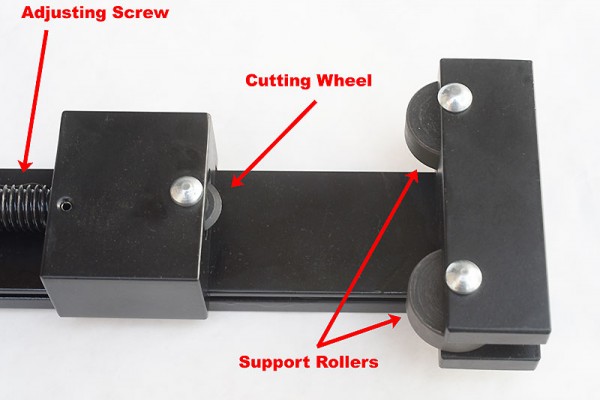
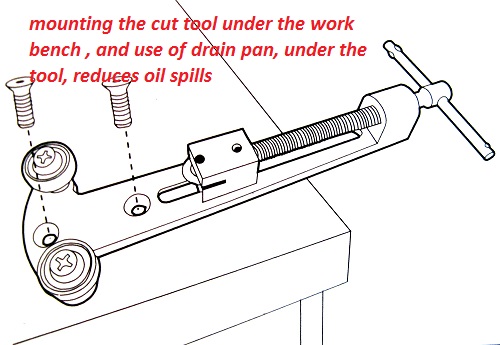
if you don,t think a proper magnet can trap/hold and prevent metalic debriss from getting into the oil pump and bearings , look at this picture of an oil pan magnet I found posted
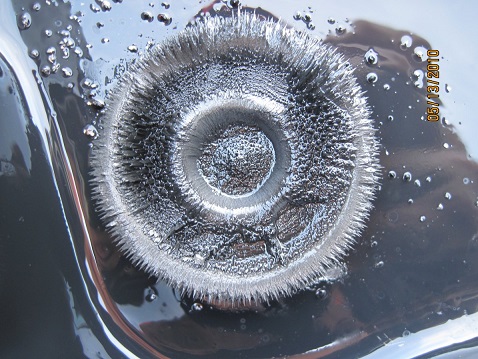
Model# SMCO-D8
Samarium Cobalt Magnets 3/4 in x 1/4 in Disc
Suitable for high temperature applications
Wholesale Price Range:
$2.99

carefully cut off the top of the filter.
· Remove the element from the filter housing and pour the contents of the housing onto some clean absorbent paper.
· Inspect the absorbent paper for traces of foreign particles.
· Inspect the filter medium for signs of damage and blockages. Blockages force the bypass valve into operation, allowing unfiltered fluid to travel to and enter major components.
· Remove the filter medium from the filter by cutting between 2030 mm (about one inch) from the end plate and cut the medium into small pieces.
· Carefully inspect the filter medium for traces of metal contaminants.
Most engine trouble involves the lube system, and cutting waste filters apart often reveals warning signs that will help avert major damage. As a disposable element of the system, the filter sometimes acts as a fuse, calling attention to problems by failing before engine components are damaged. Problems associated with wear in the combustion chamber inevitably show up in the oil, and the filter collects clues. Field maintenance operations that take time to read the signs will have another tool for anticipating failures and reducing repair costs.
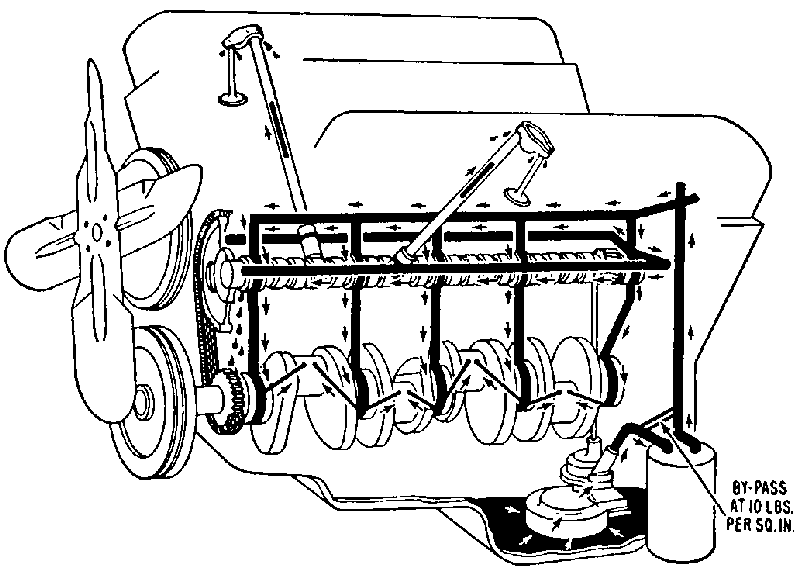
http://www.machinerylubrication.com/Rea ... inspection
http://www.tomorrowstechnician.com/Arti ... lters.aspx
http://www.tomorrowstechnician.com/Arti ... lures.aspx
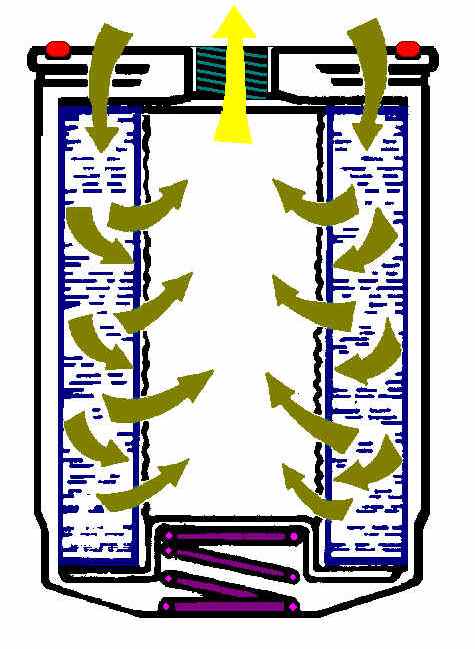
http://www.summitracing.com/parts/SUM-9 ... toview=sku
http://www.circletrack.com/techarticles ... index.html
http://www.summitracing.com/parts/SUM-9 ... toview=sku
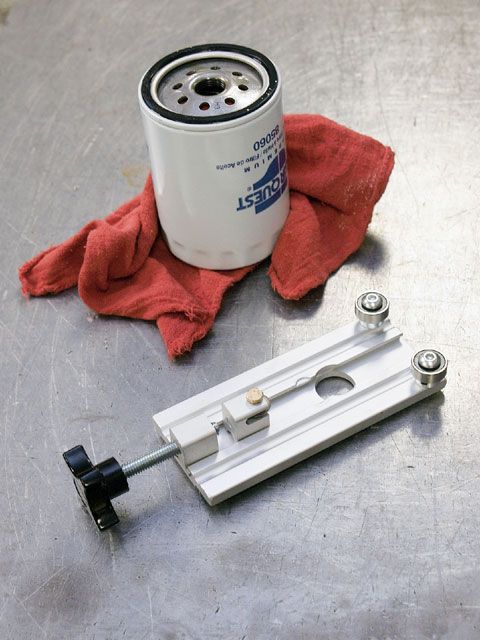

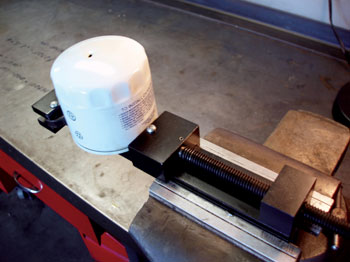
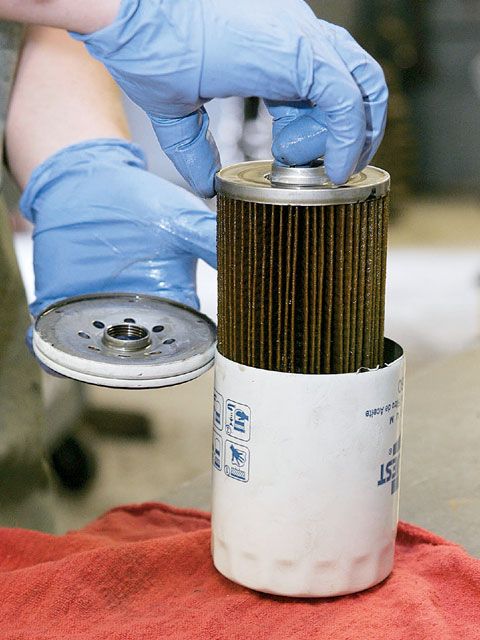
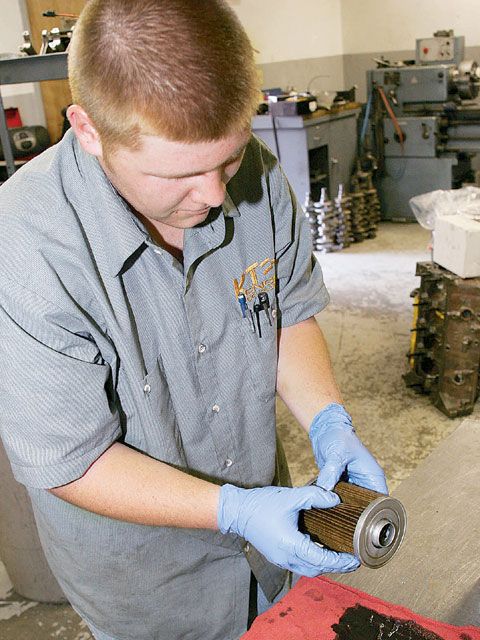
related info
viewtopic.php?f=51&t=2919
viewtopic.php?f=44&t=799&p=1161&hilit=+filter+select#p1161
viewtopic.php?f=54&t=3834&p=10199&hilit=+filter+oil#p10199
viewtopic.php?f=54&t=117
viewtopic.php?f=54&t=3519&p=9289&hilit=+filter+oil#p9289
viewtopic.php?f=54&t=2080&p=5568&hilit=+filter+oil#p5568
Regular oil changes can drastically reduce the amount of sludge buildup in the oil.
Basic filter cutting & inspection procedures

you would be amazed at the sludge build up in some engines
· Visually check the filter and or filter canister for cracks and leaks.
· Inspect the filter`s bypass valve to ensure it is operating correctly.
· Drain the filter of its contents (dispose of this liquid in the correct manner in accordance with local environmental guidelines).
· Firmly hold the filter in an upright position (head on top) taking care not to crush or damage the housing.
· Using a specially designed filter cutting tool (for example, Komatsu part number 3310587S )
heres a helpful diagnostic tool,
obviously buying an oil filter can opener tool, and doing some close personal inspection of what your dealing with won,t hurt.
http://www.summitracing.com/parts/sum-900510/overview/
http://www.homedepot.com/s/paint+filter?NCNI-5
almost any auto paint store and most hardware stores sell these disposable throw away paint strainer filters , that cost about 20-35 cents each, or a bit less in bulk packs, honestly I don,t see why most guys don,t invest the dollar it takes for a magnet and a couple filters


btw most paint stores and places like lowes and home depot sell these paint filters dirt cheap,
Id suggest you buy a couple and use them, to filter draining oil as the oil drains out ,
as they are rather useful for rapidly indicating potential engine wear issues
btw hot oil will cause them to fold so you use them dropped into a large funnel as a support structure

you'll want a decent size metal funnel as plastic can get flimsy if subjected to hot oil flow
and you'll want insulating gloves if you're holding a metal funnel full of hot oil, and of course,
a decent container to drain that hot oil into
shop carefully, identical funnels can be found for sale,
that cost $18-over $90 on ebay and amazon
https://www.tractorsupply.com/tsc/product/delphos-funnel-6-qt-3958503
https://www.acehardware.com/departments/lawn-and-garden/outdoor-power-equipment/funnels/7060460
https://www.acehardware.com/departments/lawn-and-garden/outdoor-power-equipment/funnels/7060478
heres a helpful diagnostic tool,(the oil filter cutter pictured below) and yes I still cut open the oil filters and inspect the filter element on my cars oil filter [/color]
heres a helpful diagnostic tool,(the oil filter cutter pictured below) and yes I still cut open the oil filters and inspect the filter element on my cars oil filter

proper magnets trap metallic debris
SmCo Samarium Cobalt Disc Magnets
http://www.magnet4less.com/

Samarium Cobalt MAGNETS HELP
http://www.magnet4sale.com/smco-disk-magnet-dia-1x1-4-samarium-cobalt-magnets-608-f-temperature/
magnets are ceramic and glass hard, don,t try to drill or grind them, as they can shatter





if you don,t think a proper magnet can trap/hold and prevent metalic debriss from getting into the oil pump and bearings , look at this picture of an oil pan magnet I found posted

Model# SMCO-D8
Samarium Cobalt Magnets 3/4 in x 1/4 in Disc
Suitable for high temperature applications
Wholesale Price Range:
$2.99

carefully cut off the top of the filter.
· Remove the element from the filter housing and pour the contents of the housing onto some clean absorbent paper.
· Inspect the absorbent paper for traces of foreign particles.
· Inspect the filter medium for signs of damage and blockages. Blockages force the bypass valve into operation, allowing unfiltered fluid to travel to and enter major components.
· Remove the filter medium from the filter by cutting between 2030 mm (about one inch) from the end plate and cut the medium into small pieces.
· Carefully inspect the filter medium for traces of metal contaminants.
Most engine trouble involves the lube system, and cutting waste filters apart often reveals warning signs that will help avert major damage. As a disposable element of the system, the filter sometimes acts as a fuse, calling attention to problems by failing before engine components are damaged. Problems associated with wear in the combustion chamber inevitably show up in the oil, and the filter collects clues. Field maintenance operations that take time to read the signs will have another tool for anticipating failures and reducing repair costs.

http://www.machinerylubrication.com/Rea ... inspection
http://www.tomorrowstechnician.com/Arti ... lters.aspx
http://www.tomorrowstechnician.com/Arti ... lures.aspx

http://www.summitracing.com/parts/SUM-9 ... toview=sku
http://www.circletrack.com/techarticles ... index.html
http://www.summitracing.com/parts/SUM-9 ... toview=sku





related info
viewtopic.php?f=51&t=2919
viewtopic.php?f=44&t=799&p=1161&hilit=+filter+select#p1161
viewtopic.php?f=54&t=3834&p=10199&hilit=+filter+oil#p10199
viewtopic.php?f=54&t=117
viewtopic.php?f=54&t=3519&p=9289&hilit=+filter+oil#p9289
viewtopic.php?f=54&t=2080&p=5568&hilit=+filter+oil#p5568
Last edited by a moderator:
Re: Inspecting flter

http://www.kjmagnetics.com/proddetail.asp?prod=RY046

http://www.summitracing.com/parts/SUM-9 ... toview=sku
if you really want to keep tabs on engine condition, regular oil changes, having a magnet like this on the base of your oil filter and using a cutting tool designed to allow inspection of your oil filters after every oil change will provide you with a great deal of information and potentially prevent or at least alert you to potential minor problems, long before they become expensive major problems

http://www.kjmagnetics.com/proddetail.asp?prod=RY046

http://www.summitracing.com/parts/SUM-9 ... toview=sku
if you really want to keep tabs on engine condition, regular oil changes, having a magnet like this on the base of your oil filter and using a cutting tool designed to allow inspection of your oil filters after every oil change will provide you with a great deal of information and potentially prevent or at least alert you to potential minor problems, long before they become expensive major problems
Last edited by a moderator:
Mark Bradley
Da guy in Newbury
I don’t quite understand the two magnets separated by what looks like a piece of coat hanger. Where does that go? How is that applied? Are you placing it inside the new oil filter?
I use the traditional magnetic oil drain plug and put a high energy magnet on the outside of my filter.
BTW... thank you.
I use the traditional magnetic oil drain plug and put a high energy magnet on the outside of my filter.
BTW... thank you.
the two magnets separated, on the rod is simply demonstrating the strength of the magnetic field it has no application,
you simply stick one magnet on the base of the oil filter where the magnetic field,
from that single magnet traps and holds metallic trash in the lower oil filter
you simply stick one magnet on the base of the oil filter where the magnetic field,
from that single magnet traps and holds metallic trash in the lower oil filter
